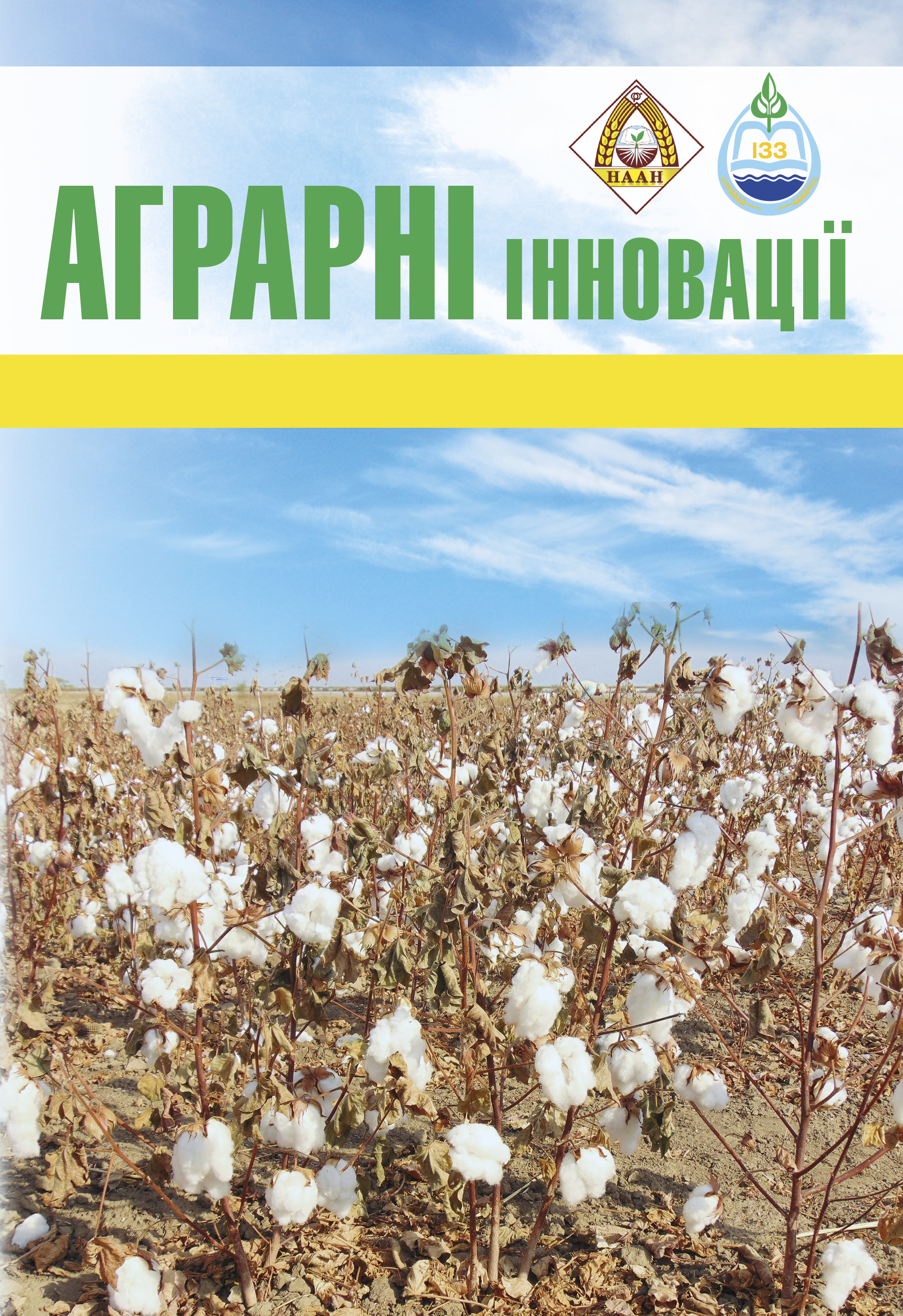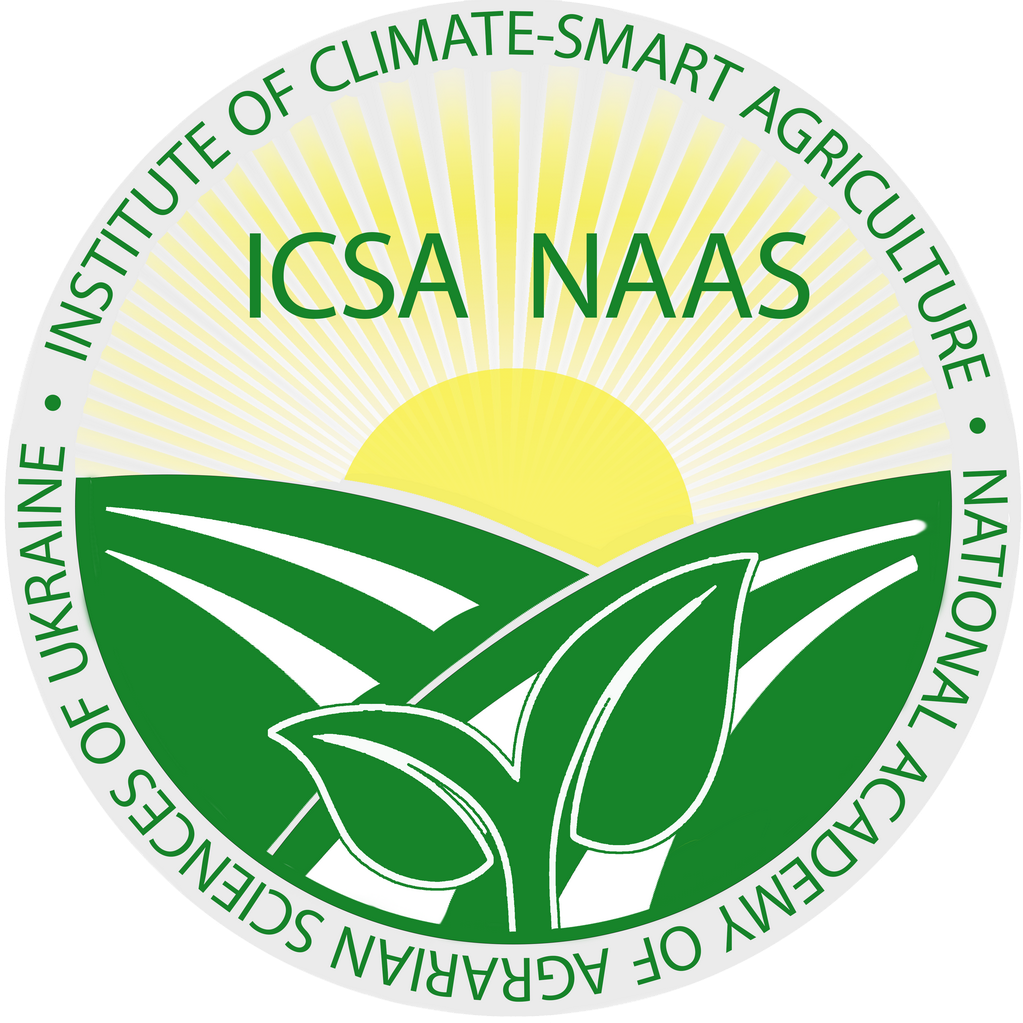Formation of green mass of dill Aligator variety under the influence of the microbiological preparation of EM Agro in the conditions of the northern steppe of Ukraine
Abstract
The article explores an important issue of increasing the productivity of the Аligator variety in conditions characteristic of the boogin agriculture of the Northern Steppe zone of Ukraine, in particular in the Kirovograd region. The objective. The aim of the work was to study and substantiate optimal agrotechnical techniques, including the use of the microbiological preparation of EM Agro at different doses and variants of row width, to maximize the formation of green mass of culture. The relevance of the work is due to increasing demand for green products, the need to increase the profitability of its production in conditions of limited water resources and the search for environmentally safe methods of crop intensification. Methods. The study was conducted in open soil conditions that mimic the boom conditions of the Northern Steppe zone of Ukraine. The experiment had a multifactorial scheme, which included eight options for three repetitions and an area of 1 m² of accounting area. The experiment included control options without the use of fertilizers and variants with the use of microbiological preparation EM Agro at doses of 3, 4 and 5 l/ha. The influence of two row width variants was also studied: 15 cm and 30 cm. During the growing season, regular observations and measuring of key agrobiological indicators were carried out. In particular, the field germination of seeds (%), the height of the plants (cm) at different stages of development, the mass of one plant (G), the area of the leaf surface (cm²) and the yield of green mass (t/ha) were evaluated. Results.The data obtained clearly showed a significant positive effect of the microbiological preparation EM Agro on all the studied rates of growth and development of dill. A significant increase in the similar seeds in variants using EM Agro is revealed, which provides optimal crop yield. The plants treated with the preparation showed more intense growth, which was manifested in the higher values of the height of the plants of dill, a significant increase in the average weight of one plant and the area of the leaf surface compared to the options for control. The highest productivity of dill plants and, as a consequence, the total output of green mass is recorded with the use of EM Agro at a dose of 5 l/ha. Options with a row spacing of 15 cm showed a higher yield compared to a width of 30 cm. The highest yield rates exceeding 20 t/ha were achieved in the variant with the introduction of 5 l/ha and the width of the row spacing 15 cm. Findings. The studies have revealed high efficiency of the microbiological preparation of EM Agro in increasing the productivity of dill Aligator variety in the booming conditions of the northern steppe of Ukraine. The use of the drug contributes to better seed germination, increased growth processes, increased biomass of one plant and the overall output of green mass. The optimal rate of use of the microbiological preparation EM Agro for these conditions is 4 l/ha. In addition, the expediency of using a row spacing is 15 cm to maximize the crop.The results emphasize the prospect of integration of biological preparations in the technology of growing green crops to ensure a stable and environmentally friendly agricultural production in the conditions of climate change and limited water resources.
References
2. Asoegwu C. R., Awuchi C. G., Nelson K., Orji C. G., Nwosu O. U., Egbufor U. C., & Awuchi C. G. A Review on the Role of Biofertilizers In Reducing Soil Pollution and Increasing Soil Nutrients. Himalayan Journal of Agriculture, 2020, 1, 34–38.
3. Kovalov M. M. Optimization of the technological parameters of the nutrient solution with the help of EM preparation when growing micro greens in hydroponic columns: Development of the agricultural sector, food and veterinary medicine in Ukraine and EU countries (December 25–26, 2024. Riga, the Republic of Latvia) : International scientific conference. Riga, Latvia: Baltija Publishing, 2024. рр. 5–6. ISBN 978-9934-26-518-1.
4. Basu A., Prasad P., Das S. N., Kalam S., Sayyed R. Z., Reddy M. S., & Enshasy H. E. Plant Growth Promoting Rhizobacteria (PGPR) as green bioinoculants: recent developments, constraints, and prospects. Sustainability, 2021, 13 (3), 1140. DOI https://doi.org/10.3390/su13031140.
5. Nosheen S., Ajmal I., & Song Y. Microbes as biofertilizers, a potential approach for sustainable crop production. Sustainability, 2021, 13 (4), 1868. https://doi.org/10.3390/su13041868.
6. Roy A. Biofertilizers for Agricultural Sustainability: Current Status and Future Challenges. Current Trends in Microbial Biotechnology for Sustainable Agriculture, Springer, 2021, 525–553. https://doi. org/10.1007/978-981-15-6949-4_21.
7. Elsayed S. I. M., Glala A. A., Abdalla A. M. et al. Effect of biofertilizer and organic fertilization on growth, nutrient contents and fresh yield of dill (Anethum graveolens). Bull Natl Res Cent. 2020, 44, 122. https://doi.org/10.1186/s42269-020-00375-z.
8. Mitter E. K., Tosi M., Obregón D., Dunfield K. E., Germida J. J. Rethinking Crop Nutrition in Times of Modern Microbiology: Innovative Biofertilizer Technologies. Frontiers in Sustainable Food Systems, 2021, 5, 606815. DOI 10.3389/fsufs.2021.606815.
9. Arif I., Batool M., and Schenk P. M. Plant microbiome engineering: expected benefits for improved crop growth and resilience. Trends Biotechnol. 2020, 38, 1385–1396. doi: 10.1016/j.tibtech.2020.04.015.
10. Spriccia M. et al. A Meta-Analysis of Biostimulant Yield Effectiveness in Field Trials. Frontiers in Plant Science, 2022, 13, 836702. DOI 10.3389/fpls.2022.836702.
11. Shahrajabian M. H., Khoshkharam M., Mohammadi M., & Yousefi-Rad E. Dill (Anethum graveolens L.): A multipurpose. Journal of Medicinal Plants and Herbal Therapy Research, 2019, 7 (1), 1–9.
12. Пігуль В. М., Дейнека В. І., & Ващенко В. П. Методика польового досліду в овочівництві і баштанництві. Харків: Стиль-Іздат. 2018, 270 с.
13. Дослідна справа в агрономії. Книга друга. Статистична обробка результатів агрономічних досліджень: навчальний посібник / Рожков А. О., Каленська С. М., Пузік Л. М. та ін. Х. : Майдан, 2016. 298 с.
14. Khaliq A., Abbasi M. K. and Hussain T. Effects of integrated use of organic and inorganic nutrient sources with effective microorganisms (EM) on seed cotton yield in Pakistan. Bioresource Technology. 2006, 97: 967–972.
15. Demir H., Sönmez İ., Uçan U., Akgün İ. H. Biofertilizers Improve Plant Growth, Yield, and Mineral Concentration of Lettuce and Broccoli. Agronomy. 2023, 13 (8), 2031. DOI 10.3390/agronomy13082031.
16. Sharma B., Yadav L., Pandey M., & Shrestha J. Application of Biofertilizers in crop production: A review. Peruvian Journal of Agronomy, 2022, 6 (1), 13–31. DOI 10.21704/pja.v6i1.1864 arxiv.org+9revistas. lamolina.edu.pe+9mdpi.com +9.
17. Mateusz Mącik, Agata Gryta, Magdalena Frąc. Biofertilizers in agriculture: An overview on concepts, strategies and effects on soil microorganisms. Advances in Agronomy. 2020, Vol. 162, 31–87. DOI 10.1016/bs.agron.2020.02.001.
18. Urbano A. et al. Enhancing Sustainability in Intensive Dill Cropping: Comparative Effects of Biobased Fertilizers vs. Inorganic Commodities on Greenhouse Gas Emissions, Crop Yield, and Soil Properties. Agronomy. 2022, 12 (9), 2124. https://doi.org/10.3390/agronomy12092124.
19. Etefa O. F., Forsido S. F.. & Kebede M. T.. (). Postharvest Loss, Causes, and Handling Practices of Fruits and Vegetables in Ethiopia: Scoping Review. Journal of Horticultural Research. 2022, 30 (1), 1–10. https://doi.org/10.2478/johr-2022-0002.
20. Ковальов М. М. Вплив параметрів кліматозабезпечення на вирощування мікрозелені в умовах плівкової теплиці. Таврійський науковий вісник: Науковий журнал. Сільськогосподарські науки. Видавничий дім «Гельветика». 2022, Вип. 126 С.153–162. DOI https://doi.org/10.32851/2226-0099.2022.126.21.
21. Ковальов М. М. Вплив іонного складу поживного середовища на вирощування ремонтантних сортів полуниці в гідропонних колонах Таврійський науковий вісник: Науковий журнал. Сільськогосподарські науки. Видавничий дім «Гельветика», 2020. Вип. 116, С. 104–111. DOI https://doi.org/10.32851/2226-0099.2020.116.1.13.

This work is licensed under a Creative Commons Attribution 4.0 International License.






